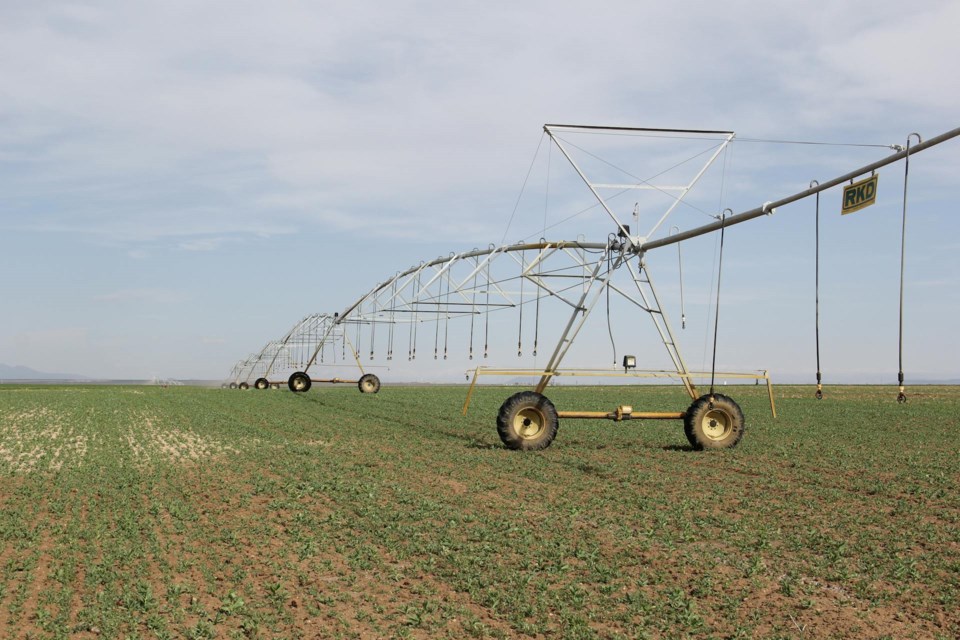Over the coming growing season in Alberta, some farmers who rely on irrigation are seeing a large reduction in the amount of water they can use to grow crops due to possible drought.
RJ Sigurdson, minister of agriculture and irrigation, said irrigators understand the importance of conserving water, and some irrigation districts are cutting water allocations by about 50 per cent this year.
Having less water can impact what crops a farmer decides to grow, said Sigurdson, the MLA for Highwood.
“When you cut their allocation in half, it definitely does mean that our farmers have to make a decision,” he said.
He said specialty crops like potatoes or sugar beets generally need 14 to 16 inches of water per acre over the growing season.
Richard Phillips, general manager of the Bow River Irrigation District, said allocations vary across the province and irrigation districts in southern Alberta are allocating about eight inches per acre.
“The situation for districts that draw water out of the Oldman basin is vastly different from the situation for districts that draw water out of the Bow River basin,” Phillips said.
“The Bow River, honestly, at this point looks great,” he said.
The Bow River Irrigation District serves a vast area in southeast Alberta, with headquarters in Vauxhall.
“In the Oldman, the situation is not as good because their reservoirs were very low going into last winter,” Phillips said.
Allocations in the Bow River Irrigation District are for 16 inches per acre this year, a decrease from the 20 inches that is normally allowed, he said.
With an incredible drought in 2023, only one irrigator used the 20-inch limit and most used 15 inches or less, and farmers have no incentive to use more water than they need, he said.
“It's like your house plants,” he said. “If you put too much water on, they get sick; farmer's fields are no different.”
Gov't announces new funding for irrigation infrastructure
To help conserve available water, the Province recently announced it is providing an additional $5.5 million for the Irrigation Rehabilitation Program, bringing its total to $19 million this year.
The program, funded by the Alberta government and by irrigation districts, works to modernize irrigation infrastructure.
Sigurdson said the program reduces water loss and helps irrigate more efficiently.
“Investing in our irrigation infrastructure now will help counter dry conditions, including drought, and increase the resiliency and competitiveness of our agricultural industry,” he said.
Among other projects covered through the program, irrigation canals are converted to pipelines, reducing water loss through seepage and evaporation, the Province said.
In 2022, the Province said over nine kilometres of canals were converted.
Phillips said pipeline conversions are a big water saver.
“A canal loses water,” he said. “In a closed system, there is no water loss, there is no evaporation.”
According to the Government of Alberta, irrigation accounts for over 44 per cent of water allocations in the province and irrigation districts own and operate more than 7,700 kilometres of canals and pipelines.
Within Alberta’s 11 irrigation districts, 1.5 million acres of land is under irrigation and Alberta is home to 70 per cent of irrigated acres in Canada, the Province said.



